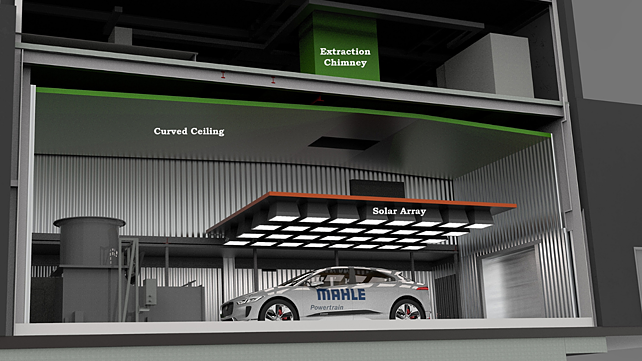
In response to high levels of demand for its expertise and facilities, Mahle Powertrain has broken ground for developing the new test chamber located at its Real Driving Emissions (RDE) Centre in Northampton.
Slated to commence operations during the second quarter of CY22, the new centre will be optimised to develop and validate electric vehicle powertrain.
The £5.1 million investment complements the existing capability of the RDE Centre, which opened in 2018. It will also provide the automotive industry with additional specific hydrogen fuel cell-powered vehicle testing capacity.
David Pates, Head of engineering, MAHLE Powertrain, said, “The demand for this facility reflects the agile, fast-paced evolution of the automotive industry’s current push for the development of advanced powertrain technologies. Vehicle manufacturer and Tier-1 customers realised the time and cost benefits of utilising our first test chamber during the lockdown, and this investment will further broaden our capabilities as the industry emerges from the pandemic having adopted new, more flexible ways of working.”
Demand for MAHLE Powertrain’s first hypobaric and climatic test chamber pushed capacity in the last 12 months when the company signed off whole vehicle test programmes to overcome travel restrictions. With an operating temperature range of -20 degree Celcius to 40 degree Celcius, the second chamber will be equipped with a battery emulator for EV testing and can simulate solar loading. It has been designed with blast walls and a domed chamber roof as in-built safety measures for the handling of hydrogen.
“We estimate that 73% of passenger cars globally will still feature an internal combustion engine by 2035, and over 50% by 2040, so we don’t anticipate any drop in the high level of demand experienced for our first chamber,” Pates said.
“For this reason, it made sense for the latest investment to complement our existing capability by increasing its specific focus on electrification and hydrogen-fuelled powertrain. We believe that the ability to provide facilities dedicated to the industry’s diverse propulsion requirements will be extremely beneficial for ambitious manufacturers and Tier-1 suppliers.”